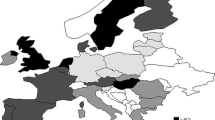Abstract
The slowing population growth and consequent aging of the population in Canada and elsewhere have raised questions of the ability of such populations to provide support to their non-working or dependent, particularly their aged, members. Previous discussions have often been focussed on demographic measures of dependency, but more recent research has shown that, in North American society, the per capita costs of providing public programmes to an elderly member are between two and three times higher than those to a younger member of society. However, these measures have made no attempt to take into account changing labour market conditions. This paper develops measures of dependency to incorporate these latter effects. Calculations with Canadian data (1921–2021) show that demographic and economic dependency in Canada are currently at historically low levels. The numerical results also suggest that the effects of the general increases in labour force participation rates, that have characterized the past two decades, have more than offset the effects of the general increases in unemployment rates, and that future increases in participation rates and, perhaps, decreases in unemployment rates could provide a significant alleviation of the impacts of population aging on government expenditures in the years ahead.
Similar content being viewed by others
Bibliography
Clark, R., J. Kreps and J. Spengler (1978), “Economics of Aging: A Survey”, Journal of Economic Literature, Vol. 16 (September), pp. 919–962.
Clark, R.L. and J.J. Spengler (1980), “Dependency Ratios: Their Use in Economic Analysis” in J.L. Simon and J. Da Vanzo (eds.), Research in Population Economics: A Research Annual, Vol. 2 (Greenwich, Conn.: Jai Press), pp. 63–76.
De Vita, C.J. (1981), “Measuring Dependency in the U.S. and in Canada”, paper presented at the 34th Annual Meetings of the Gerontological Society of America, 17 pp.
Economic Council of Canada (1979), One in Three: Pensions for Canadians to 2030 (Ottawa: Canadian Government Publishing Centre).
Espenshade, T.J. and W.J. Serow (1978), The Economic Consequences of Slowing Population Growth (New York: Academic Press).
Foot, D.K. (1982), Canada's Population Outlook: Demographic Futures and Economic Challenges (Toronto: J. Lorimer & Co. for the Canadian Institute for Economic Policy).
Foot, D.K. (1987), “Population Aging and Government Deficits in Canada”, Discussion Paper Number 87.A.4 (Ottawa: Institute for Research on Public Policy).
Keynes, J.M. (1937), “Some Consequences of a Declining Population”, Eugenics Review, Vol. 29 (March), pp. 13–17.
Manchester, J. (1988), “The Baby Boom, Housing and Financial Flows”, American Economic Review, Vol. 78 (May), pp. 66–69.
McDonald, L. (1977), “Changing Population and the Impact on Government Age-Specific Expenditures”, mimeo (Ottawa: Canada Treasury Board Secretariat).
Reddaway, W.B. (1939), The Economics of Declining Population (New York: Macmillan).
Riche, M.F. (1981), “The Future of Organized Labour”, American Demographics, Vol. 3 (September), pp. 28–33.
Robey, B. and M. John (1980), “The Political Future: The Demographics of Politics”, American Demographics, Vol. 2 (October), pp. 15–21.
Robinson, J. (1951), “Economic Consequences of a Decline in the Population of Great Britain” in Collected Economic Papers, Vol. 1 (Oxford: Basil Blackwell), pp. 115–132.
Schapiro, M.O. and D. A. Ahlburg (1986), “Why Crime is Down”, American Demographics, Vol. 8 (October), pp.56–60.
Thurow, L. (1981), The Zero-Sum Society (New York: Penguin Books).
Author information
Authors and Affiliations
Rights and permissions
About this article
Cite this article
Foot, D.K. Public expenditures, population aging and economic dependency in Canada, 1921–2021. Popul Res Policy Rev 8, 97–117 (1989). https://doi.org/10.1007/BF00124282
Issue Date:
DOI: https://doi.org/10.1007/BF00124282




